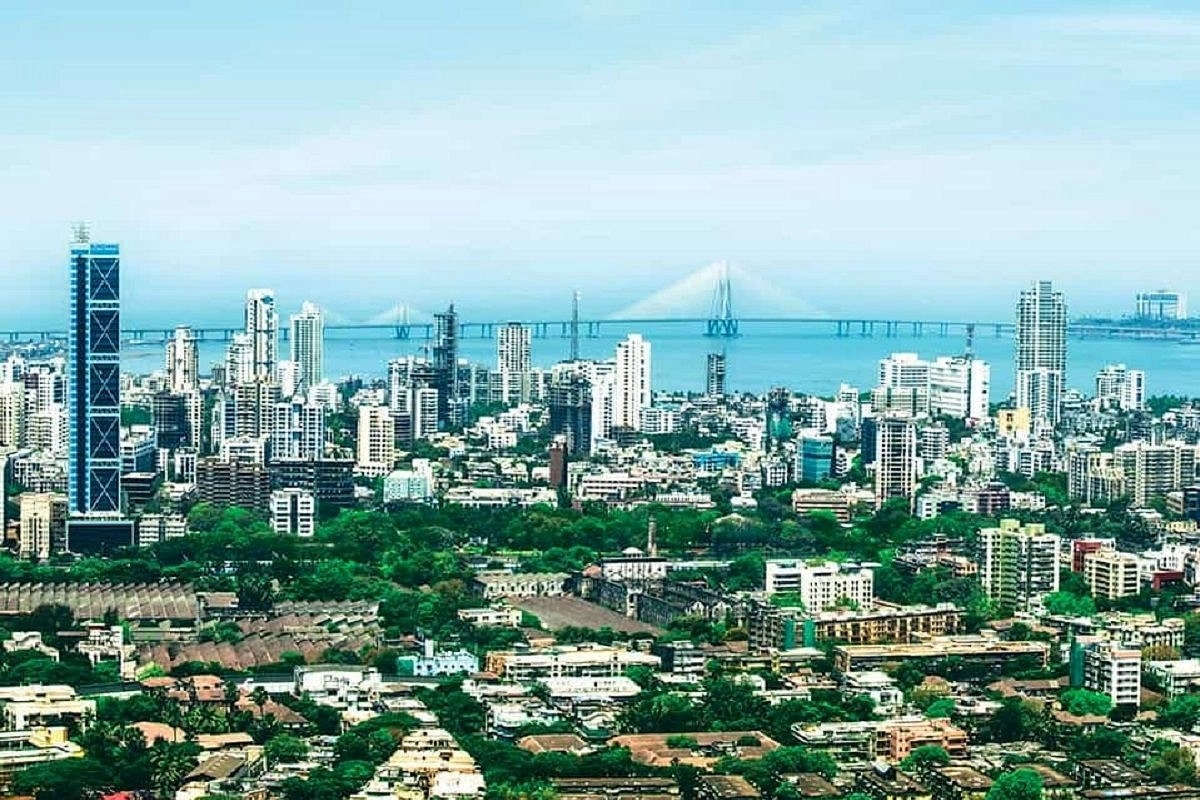Infrastructure
Maharashtra Government Greenlights 'Third Mumbai': A New City Project For Sustainable Urban Development
- Currently, Mumbai covers approximately 600 sq. km, Navi Mumbai 344 sq. km and NAINA 370 sq. km, encompassing 174 villages.

The proposed city aims to stimulate economic activity and contribute significantly to the country's GDP. (L&T Realty)
In a strategic move to cater to the burgeoning population of the Mumbai Metropolitan Region (MMR) and boost economic growth, the Maharashtra state government has given the green light to a comprehensive proposal for the development of a new city, aptly named the 'Third Mumbai.'
The proposed city will focus on providing improved housing, robust infrastructure, and enhanced transport facilities.
The new city is set to be situated around the Navi Mumbai International Airport, with vital connectivity provided by the Atal Bihari Vajpayee Sewri-Nhava Sheva Atal Setu, commonly known as the Mumbai Trans Harbour Link (MTHL).
State government officials stated that the approval of this ambitious proposal last week, signalling a significant step towards addressing the region's developmental needs, reports Hindustan Times.
The Mumbai Metropolitan Region Development Authority (MMRDA) is expected to play a pivotal role in reshaping the far reaches of MMR. To facilitate this, a dedicated body, the New Town Development Authority (NTDA), has been established.
The NTDA will oversee the transformation of areas including Ulwe, Pen, Panvel, Uran, Karjat, and surrounding regions, covering an extensive 323 sq. km.
Approximately 200 villages, including 80-90 within the Navi Mumbai Airport Influence Notified Area (NAINA), are anticipated to become part of the NTDA.
A government official emphasised that the 'Third Mumbai' will be a fully developed city featuring residential (both luxury and affordable), commercial complexes, data centres, MNC hubs, banks, financial companies, and extensive knowledge parks.
Furthermore, a robust public transportation system is in the works.
The proposed city aims to stimulate economic activity and contribute significantly to the country's gross domestic product (GDP).
Plans include the development of a second Bandra-Kurla Complex in Kharghar, spanning around 150 hectares, to serve as a dedicated commercial area attracting both Indian and multinational companies.
The overall vision aligns with the government's plan to transform the MMR into a region capable of generating a potential USD 0.25 trillion economy.
Currently, Mumbai covers approximately 600 sq. km, Navi Mumbai 344 sq. km, and NAINA 370 sq. km, encompassing 174 villages.
Boost To Economic Growth
The MMRDA and NITI Aayog, the country's planning agency, are collaboratively working to elevate Mumbai's GDP from the current $140 billion to $300 billion by 2030. The 'Third Mumbai' holds a pivotal role in this economic masterplan.
The MTHL and Navi Mumbai International Airport are expected to contribute significantly to India's GDP, potentially adding 1 percentage point.
The new airport, slated to open next December, will not only alleviate pressure on Mumbai's existing airport but also enhance regional connectivity, with an initial capacity to handle 20 million passengers annually.
Concerns about affordable housing opportunities have been raised, particularly in areas like NAINA, due to high development charges. Developers emphasise the importance of balancing economic growth with accessible housing to ensure sustainable urban development.
To strengthen public transportation, the Mumbai Rail Vikas Corporation is implementing the Panvel-Karjat suburban rail corridor at a cost of Rs 812 crore.
The project, set to be completed by December 2025, involves three tunnels, two rail flyovers, and five railway stations, connecting Navi Mumbai with the Raigad district of MMR.
This corridor is expected to reduce congestion on suburban local trains and act as a catalyst for the overall development of Panvel, Karjat, NAINA, and the proposed NTDA.
Support Swarajya's 50 Ground Reports Project & Sponsor A Story
Every general election Swarajya does a 50 ground reports project.
Aimed only at serious readers and those who appreciate the nuances of political undercurrents, the project provides a sense of India's electoral landscape. As you know, these reports are produced after considerable investment of travel, time and effort on the ground.
This time too we've kicked off the project in style and have covered over 30 constituencies already. If you're someone who appreciates such work and have enjoyed our coverage please consider sponsoring a ground report for just Rs 2999 to Rs 19,999 - it goes a long way in helping us produce more quality reportage.
You can also back this project by becoming a subscriber for as little as Rs 999 - so do click on this links and choose a plan that suits you and back us.
Click below to contribute.
Latest